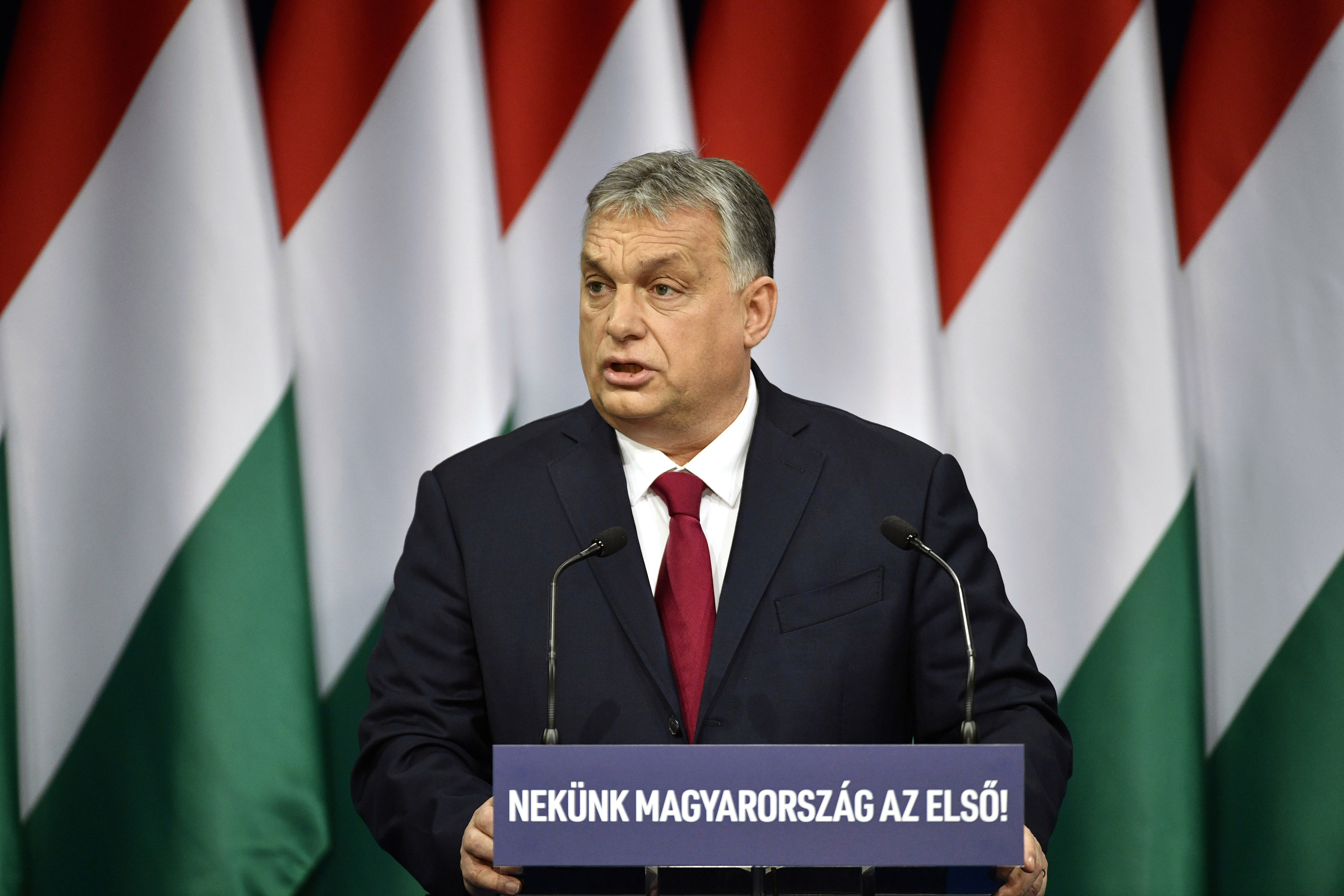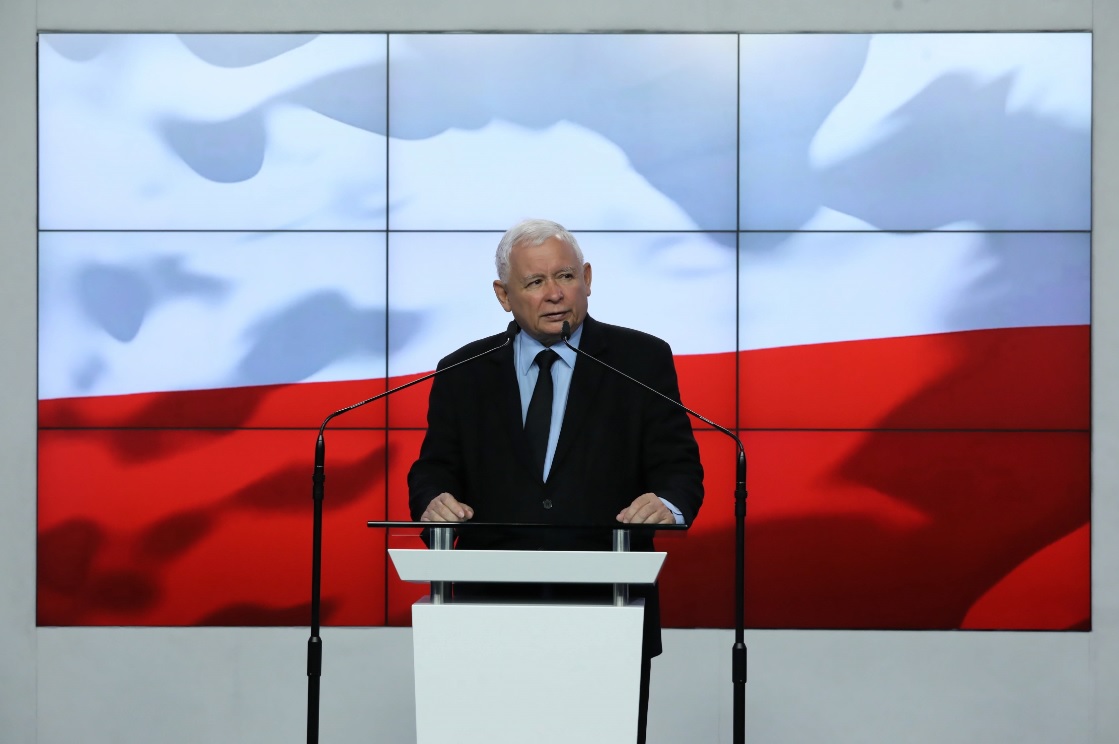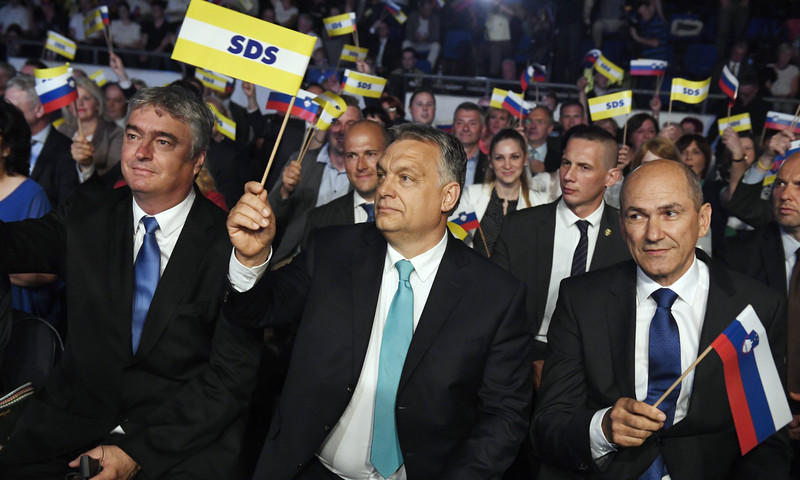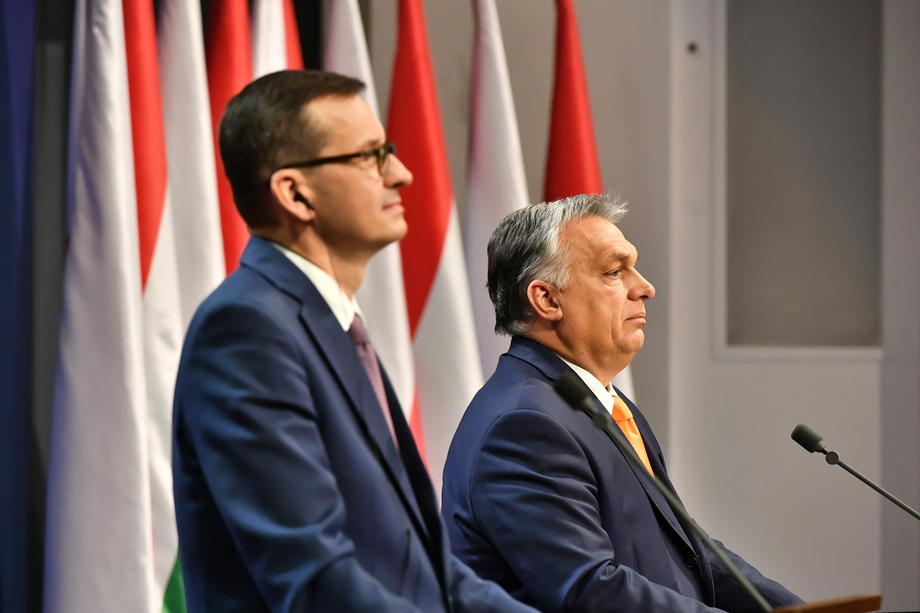Press freedom in Central Europe is under renewed threat. Yet there are no systematic arrests of journalists as in Belarus or Turkey. Less of the blatant acts of censorship common in Russia. Few of the gruesome killings of reporters that are common in autocratic countries around the world.
For illiberal governments bound by the democratic architecture of the European Union, efforts to silence independent journalism and insulate the public from critical reporting have to be far more complex and, most importantly, calibrated to avoid direct rebuke from Brussels.
The pioneer of this populist playbook within the EU has been the Fidesz government of Hungarian Prime Minister Viktor Orbán. Since coming to power in 2010, the party has slowly distorted the market and dismantled media pluralism, achieving a degree of media control unprecedented in an EU member state.
This steady erosion of press pluralism in Hungary would be worrying enough if it were not also empowering and inspiring other illiberal governments in EU member states to employ similar tactics.
In Poland the ruling Law and Justice (PiS) party has over the last five years engaged in a calculated cherry-picking exercise and selected elements of Hungary’s model that can be adapted to the Polish media landscape, according to a recent report by the Media Freedom Rapid Response (MFRR).
One of the most important takeaways from the MFRR’s recent press freedom mission was just how similar the tactics used by PiS are and the degree to which Fidesz’s strategy has been replicated and refined there over the last few years.
This model for media capture and control has four key elements.
- Dividing the journalistic community
The first element involves the creation of an overarching narrative within the country which divides the journalistic community along political and ideological lines, presenting liberal media as unpatriotic organs of misinformation, foreign agents or mercenaries. An entire segment of the media landscape is classified as an enemy.
In Hungary, fictions about the influence of foreign-owned newspapers were quickly wound into conspiracy theories about the liberal philanthropist George Soros – the go-to bogeyman for Fidesz. In Poland, historical anxieties over foreign interference and patriotism were exploited to smear foreign-owned media as anti-Polish.
With this divide established, the pulpit of the executive branch is then used to denigrate, demonize and discredit these media organizations and their reporting. Dog whistle encouragement of online harassment of individual journalists by supporters of the ruling party further worsens this climate of hostility. Public distrust then helps to justify measures to weaken or push these media out of the country.
- Control of public service media
The second element involves the capture and control of public service broadcasters: the low hanging fruit. First, increased influence over oversight bodies and media councils is used to modify management structures and then weaken editorial independence.
Critical journalists and executives are then purged and replaced with government mouthpieces. As a result, watchdog journalism becomes more marginalized and the viewpoints and values of the ruling party are amplified on the airwaves.
While political pressure on public service broadcasters can be observed in other EU member states, the extreme degree to which editorial independence was weakened in Hungary and Poland is what sets them apart.
In both countries, the public broadcasters have been deformed into state propaganda machines in which news coverage is highly unbalanced and opposition voices all but silenced.

Hungarian Prime Minister Viktor Orban. EPA-EFE/Zsolt Szigetvary
- State capture and financial pressure
The third element involves the political capture of state bodies and entities. These institutions are then used to heap financial and administrative pressure on media with the aim of destabilizing and undermining their businesses. Central here is the installation of government loyalists into leadership positions within state apparatus and regulatory bodies. The line between party and state becomes blurred.
Most valuable here is control over the country’s system of media regulation. Influence over media councils allows indirect power to arbitrarily block and deny broadcast licenses and penalize alleged breaches, forcing critical voices off the airwaves. Administrative fines and tax adjustments keep publishers off-kilter and worsens a situation of financial precarity. Ownership by government allies of infrastructure such as printing presses and newsstands offer avenues for multiplying this pressure.
Meanwhile, control over other regulatory bodies such as the competition watchdog allows mergers of independent broadcasters to be blocked and fusions of pro-government outlets to be approved, slowly distorting the media market in one direction. Options to tighten the screws further include antimonopoly investigations and extortionate retroactive tax demands. The more levers the government can pull to exert pressure, the better.
At the same time, control over state companies and agencies allows advertising revenue to be weaponized, as money is redirected away from unfavoured mediums to those providing favourable coverage. This carrot-and-stick approach starves critical media of advertising revenue and rewards alignment with the government narrative. Independent media are often boycotted from advertising altogether. Even private advertisers can be pressured into dropping their business with independent media.
- Media ownership capture
The fourth and most important element involves the closure or capture of independent media titles.
In Hungary, the engine of this capture has been a network of billionaire businessman and oligarchs close to the ruling Fidesz party and the prime minister. These allies have stepped in to buy up outlets that were financially weakened or were put up for sale by retreating foreign owners, after which editors are then ousted, journalists quit, and the editorial line is flipped. The empty shells are either closed or converted into pro-Orbán mouthpieces. Many Fidesz-aligned media owners later “donated” their holdings to the pro-government media conglomerate KESMA.
Numerous media outlets in Hungary met this fate, such as Origo, which went from critical news site to government mouthpiece after being sold by former owner Deutsche Telekom; the broadcaster TV2, which was also sold by its former German owner to a government-aligned businessman; the storied daily Népszabadság, which was shuttered in 2016. Companies linked to Fidesz successfully snapped up virtually all of Hungary’s regional newspapers before the 2018 elections there.
In Poland, however, the country’s distinctive economic transition after the fall of Communism resulted in less oligarchical control over key industries, meaning the government had less billionaire business allies to rely upon to replicate this scheme. Nevertheless, businesspeople close to PiS have in recent years tried to approach private media titles on multiple occasions to enquire about selling. The repeated failure of these bids meant a workaround was needed.
The first plan was to divide and conquer, passing legislation to “repolonize” and “deconcentrate” the country’s media market by limiting the amount of foreign capital invested in the domestic market and breaking up bigger media groups. Business allies would then have stepped in and bought up the splintered market. However, issues over compliance with EU single market law and diplomatic pressure from key allies such as the U.S forced the Ministry of Culture to shelve the plans.
Instead, PiS pioneered a form of media capture unique within the European Union: the effective nationalization of private media via a state-controlled company. This strategy achieved its first results in December 2020 when a state-controlled energy firm headed by PiS appointees, PKN Orlen, acquired control of German-owned publisher Polska Press.
The deal hands PiS indirect control over 20 of Poland’s 24 regional newspapers ahead of the 2023 local elections. Press freedom groups fear a purge of critical journalists akin to that at the public broadcaster TVP in 2016 will soon follow. Management changes began on March 2 when the company’s CEO submitted her resignation.
The sale of Polska Press marked the first successful capture of a private media company by an entity linked to the ruling party. Since then, PKN Orlen has reportedly approached other media to inquire about a deal. Comments by the PiS party leader Jarosław Kaczyński suggest the state energy company and its CEO Daniel Obajtek will remain the vehicle of media capture going forward.

The leader of the Poland’s ruling Law and Justice (PiS) party Jaroslaw Kaczynski in Warsaw, Poland. EPA-EFE/Tomasz Gzell
Complex by design
This illiberal model has been designed in such a way as to give the ruling party plausible deniability against accusations of meddling or market distortion, providing governments a semblance of strategic distance from events.
The most important factor here is that they are carried out through indirect means or through formally independent bodies, limiting the visibility and media reporting on the issue and creating and a veneer of the rule of law. These bodies work within the letter of laws often changed by the ruling parties.
Engineering the takeover of Polska Press through a state-controlled company, for example, PiS avoided major protest or pushback by European governments and has so far has dodged another battle with the European Commission over the rule of law.
By having the Fidesz-appointed and controlled media council reject the automatic license renewal for Klubrádió to block it from returning to the airwaves, the Hungarian government could throw up its hands and deny accusations of interference.
By expanding the ruling party into the sinews of the state, the pressure on independent media can be both diversified and detached from the ruling party or the country’s leading politicians.
Reaping rewards
The widespread effects of this model are clear to see. In Hungary, media ownership is heavily concentrated in the hands of the government, either directly or through pro-government investors or the pro-government KESMA foundation. Nearly 80 percent of the market for political and public affairs news is financed by sources decided by the ruling party, according to research by the Hungarian think tank Mertek Media Monitor. Pro-government media now enjoy a quasi-monopoly in the daily print media and radio sectors and are dominant overall in the television sector.
A handful of online independent media outlets – mostly online – continue to exist in Hungary, which suits the government’s desire to preserve plausible deniability about its attacks on media freedom. However, this need for deniability must be balanced against the need to insulate enough of the public from critical news, leading to regular recalibration. The collapse of popular news website Index and the revocation of Klubrádió’s license followed a year in which the opposition won victories in important cities such as Budapest. Meanwhile, Fidesz is looking ahead to national elections in 2022.
Media pluralism in Poland so far remains far more intact than in Hungary. To start, independent media there were in a stronger market position when pressure began. Despite encouragement from PiS politicians, the private advertising market has not abandoned foreign-owned press, meaning an important economic lifeline remains intact. The market conditions are not yet ripe for foreign press to sell up and leave.
But the longer PiS is able to wage its campaign against independent media, and the stronger it pressures private companies to withdraw their advertising, the weaker the market for critical media will become. The Covid-19 pandemic has only worsened the advertising market further. If passed, the planned media advertising revenue tax could prove a turning point.

Hungarian Prime Minister Viktor Orban (C), Slovenian Prime Minister and leader of the Slovenian Democratic Party (SDS) Janez Jansa attend a campaign event of SDS in Celje, Slovenia, 11 May 2018. EPA-EFE/Szilard Koszticsak
Slovenia: Copycat tactics spreading
The success of these tactics in Poland and Hungary illustrates the alarming array of methods available to those seeking to muzzle independent media. But they also point to gaps and flaws in the European Commission’s toolbox when it comes to responding effectively.
Press freedom groups including IPI have long warned that repeated inaction from the EU to stop the undermining of media pluralism in Hungary, and then in Poland, has allowed this model to spread to other EU member states.
Since coming to power again in early 2020, the Slovenian government led by veteran Prime Minister Janez Janša has revived old grievances with the media and employed Trumpian style tactics of attacking journalists on Twitter, and dismissing reporting as “fake news”.
Janša and other figures within his Slovenian Democratic Party (SDS) have also sought to divide the country’s media down ideological lines, portraying liberal media as untrustworthy “deep state” actors bearing the antecedents of Communism.
Beyond simply vocally attacking media, however, the administration has also begun to try and exert greater control over the country’s public service media. Last year the government introduced proposed legislative changes which would financially weaken the public broadcaster, RTVSLO, leading to stark warnings about its finances and future.
Another proposed amendment would give the government greater opportunities to select the supervisors and dismiss the director of the Slovenian Press Agency (STA), which has also come under fire from Janša. Most concerningly, the Government Communication Office (UKOM) suspended the financing of the STA twice in three months, in what the Slovenian Journalists’ Association said was another attempt to destabilize the press agency through financial pressure.
These moves by the government and its leadership have led to growing concerns from international press freedom groups that elements of the model are now being replicated there. While there is a long way to go until Slovenia can be considered in the same realm as Hungary or Poland, the warning signs are clear.
Ultimately, until the EU strengthens its ability to ensure this kind of divergence from the democratic values and principles has real consequences, the illiberal model for media capture and control remains a viable option for any EU leader wishing to solidify its control and remain in power.
This report by IPI is part of the Media Freedom Rapid Response (MFRR), a Europe-wide mechanism which tracks, monitors and responds to violations of press and media freedom in EU Member States and Candidate Countries.




